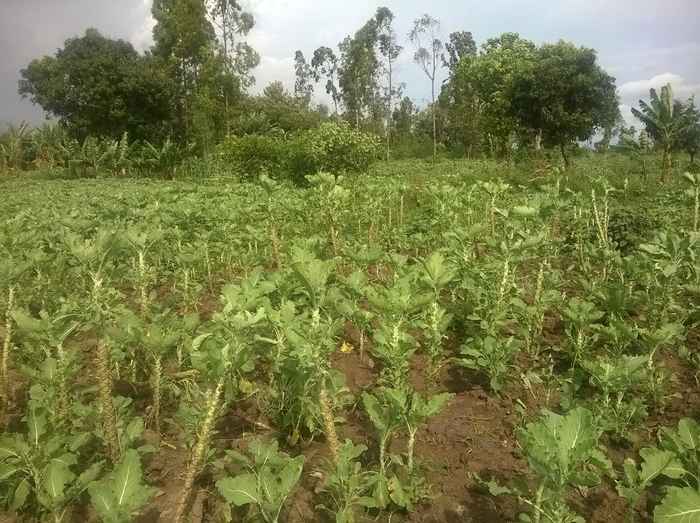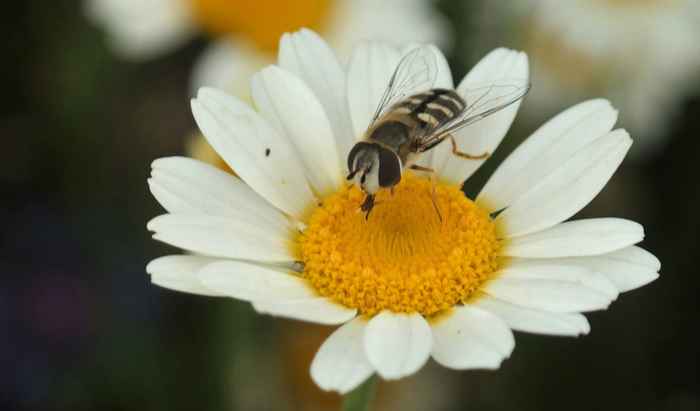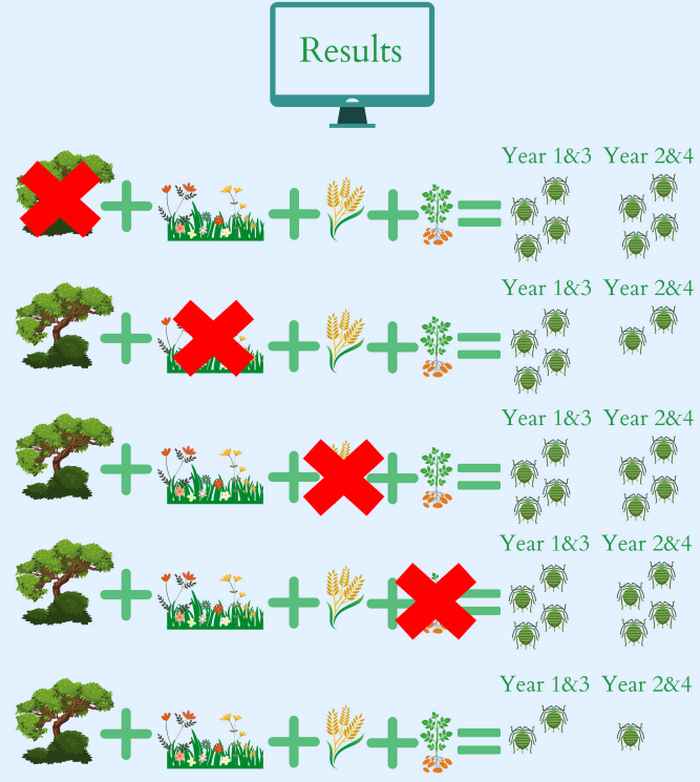Model provides tools for natural pest control
16 October 2024


The model provides guidelines for optimizing the landscape around fields. To do so, the researchers studied the interactions between aphids and hoverflies in a diverse agricultural landscape. Aphids are common pests in crops such as potato and wheat. The larvae of hoverflies eat aphids and are an effective natural pest control agent.
Yet, it is difficult for many farmers to work entirely without pesticides. For effective natural control, the surrounding landscape is also important: hoverflies cannot survive on pest aphids alone. Outside the growing season of a crop, the hoverfly larvae must find prey elsewhere, for example in shrubs and trees. Furthermore, adult hoverflies eat nectar and pollen and thus depend on flowering herbs and, early in the year, on shrubs

Resources available throughout the season
Laura Mansier is a PhD researcher at the Institute for Biodiversity and Ecosystem Dynamics (IBED) of the University of Amsterdam. To find out what mix of factors is optimal to support year-round hoverflies in and around a field, she used a mathematical model to mimic the influence of landscape composition. “Not only woody elements and flower strips turned out to be necessary, but also an early and late crop.” When those four landscape elements are present to the right extent, pest density can be reduced by as much as 95%, the model shows.
Moreover, each natural pest controller needs specific resources within those landscape elements. IBED researcher and co-author of the study Paul van Rijn: “So-called landscape complementation is about designing the landscape in such a way that essential resources are available all season long. You can enhance sustainable agriculture by planting species that provide these. For this group of hoverflies, suitable flower species include buckwheat, different umbellifers and true chamomile. Hazel, field maple and guelder rose are examples of suitable trees and shrubs, because they flower early and host aphids.”
Besides, farmers need not fear that natural vegetation would actually be a source of pest species, Van Rijn says. “The aphid species in the crops are very different from the species that live on the trees and flowers you plant around the field.”

Complete landscape provides more stability
An interesting result of the model, according to the authors, is also that the numbers of pests can fluctuate from year to year, even if the weather conditions in those years would be exactly the same. Mansier: “If one of the elements is missing from the landscape, these multi-year fluctuations can become very large, so you find quite low pest densities in one year and suddenly very high in the next year. So, a well-designed landscape can provide lower and more stable pest densities over multiple years.”
Publication
Modelling agricultural landscape complementation for natural pest control
Laura Mansier & Paul C.J. van Rijn
Journal of Applied Ecology, 16 October 2024, doi:10.1111/1365-2664.14790